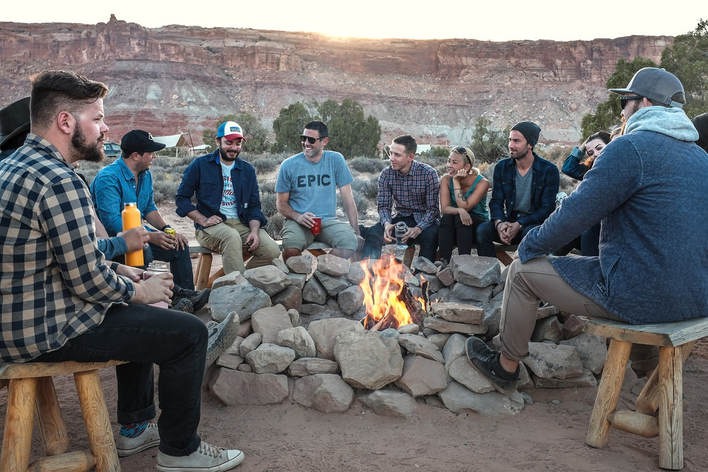Humans are social. We just can’t help ourselves. We don’t function well when we are isolated. And yet, congregations (which are typically highly social) are on the decline. People are finding different places to be social. This is the challenge congregations have been facing. It’s an opportunity for congregational leaders to thinking about the kind of community they are developing.
During a recent trip to Washington, DC., I visited the National Museum of Natural History at the Smithsonian. My time there was limited. I traced my way back to an exhibit on the development of the modern human. It showcased archaeological discoveries that highlighted the social behaviors of humans. It categorized these behaviors into four characteristics that make humans unique. The four characteristics are sharing resources, gathering at the hearth, more time to grow, and building social networks.
“Sharing Resources”
Humans share their resources with others. More than just sharing in the moment, humans have historically traveled long distances to share with others. These shared resources increased the likelihood that a group would adapt to a challenge.
“Gathering at the Hearth”
Hearths provided several important opportunities for humans. In addition to providing a common place to cook and eat food, to share resources, and to network hearths became a place for storytelling. Human language is symbolic and emotional. Gathering around the hearth provided us a place to connect emotionally with others.
“More Time to Grow”
The size of the human brain means a longer period of gestation and adolescence, leaving a human child at home for a longer period. Families collaborate in the child-rearing process. This longer development time for children means more time to prepare for the challenges of being an adult.
“Building Social Networks”
As the human population increased around the world, humans began to encounter one another more frequently. These interactions provided opportunities to build broader social networks. Today, we depend on these social networks for everything from food distribution to advancements in science and research.
These four characteristics define our highly social behavior. Where do you see these four characteristics at work today? In what ways do you share resources with others? Where do you gather with members of the community? How are you participating in the developmental process of children in your family and community? How many social networks do you belong to?
In what ways do congregations provide a place and space for these activities? There was a time when congregations were the center of community life. They provided a place for people to gather and discover resources. In some traditions, congregations provided the primary education of the children in the community. They were also the center of the community’s social network. While congregations may never fully return to this paradigm, what are ways congregations can develop themselves around these four characteristics?
In my tradition, the United Methodist Church, there was an effort several years ago to revitalize the church. It resulted in four areas of focus. These areas are:
- Engaging in Ministry with the Poor
- Improving Global Health
- Developing Principled Christian Leaders
- Creating New and Renewed Congregations
In a way, the four characteristics of human behavior can be found in these four areas of focus. Perhaps congregations would do a better job of engaging these four areas if they spent more time developing the four characteristics of human social behavior.
What would it look like for your congregation to develop ministry around the four characteristics of human behavior? What structures and programming would need to be in place?
- How does the congregation share and discover the resources in a community? What more could be done?
- How does the congregation gather the community together? From the ancient practice of gathering around the hearth, what other opportunities are available for the congregation?
- How does the congregation engage the development of children in the community?
- How does the congregation help build social networks in the community?
- Does your faith tradition have examples in scripture of the importance of these characteristics? What are some examples?
- How might these characteristics provide an opportunity for new ways to address community problems?
Historically, these characteristics helped humans survive, sometimes in challenging and difficult climates. The challenges we face today are different than those of our ancestors. What are the challenges we face today and how might these four characteristics help us move forward?

 RSS Feed
RSS Feed